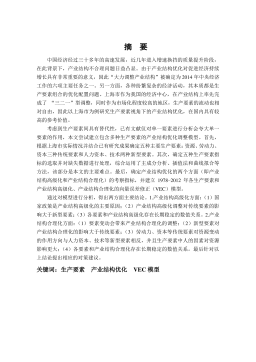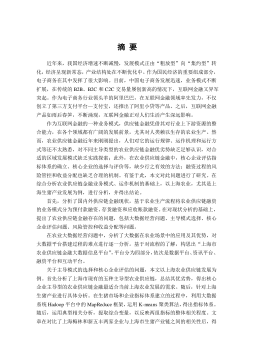
The 17th Annual IEEE International Symposium on Personal, Indoor and Mobile Radio Communications (PIMRC’06)
PERFORMANCE OF DOWNLINK FREQUENCY DOMAIN PACKET
SCHEDULING FOR THE UTRAN LONG TERM EVOLUTION
A. Pokhariyal(1)T. E. Kolding(2), P. E. Mogensen(1,2)
1) Aalborg University, CSYS 2) Nokia Networks
Aalborg, Denmark Aalborg, Denmark
ap@kom.aau.dk troels.kolding@nokia.com
ABSTRACT
In this paper we investigate the potential of downlink frequency
domain packet scheduling (FDPS) for the 3GPP UTRAN long-
term evolution. Utilizing frequency-domain channel quality re-
ports, the scheduler flexibly multiplexes users on different por-
tions of the system bandwidth. Compared to frequency-blind,
but time-opportunistic scheduling, FDPS shows gains in both
average system capacity and cell-edge data rates on the order
of 40%. However, the FDPS performance is shown to depend
significantly on the frequency-domain scheduling resolution as
well as the accuracy of the channel state reports. Assuming
Typical Urban channel profile, studies show that the schedul-
ing resolution should preferably be as low as 375 kHz to yield
significant FDPS gain with two-branch receive diversity and in
20 MHz. Further, to have convincing FDPS gain the std. of
error of radio state reports needs to be kept within 1.5-2 dB.
I. INTRODUCTION
The ambitious design goal of the 3GPP UTRAN long-term evo-
lution (LTE) is to provide spectral efficiency gains in the or-
der of 3-4 compared to e.g. Release 6 high-speed downlink
packet access (HSPDA) [1, 4]. For the LTE downlink OFDMA
is considered to be the best access technology for providing
high scalability up to large system bandwidths and to facili-
tate advanced frequency-domain scheduling methods. As LTE
is optimized for packet data transfer only, the packet scheduler
functionality assumes great significance. In this paper we study
specifically the potential of frequency-domain multiplexing of
users according to their instantaneous radio conditions. This is
most often referred to as frequency domain packet scheduling
(FDPS), although time-domain scheduling is inherent as well.
Optimal and sub-optimal sub-carrier based adaptation has
been widely studied in the literature, see e.g. [7, 3, 2] and ref-
erences therein. Most studies are conceptual in nature and dis-
regard practicalities such as limited dynamic range, multi-user
multiplexing aspects, amount of signaling overhead, adaptation
uncertainties, etc. Such factors are, however, highly relevant
in practical system design. Recent studies, e.g. [8, 10, 9],
investigate the potential of frequency domain adaptation un-
der less ideal conditions. In [10] the performance of FDPS
in a 100 MHz OFDMA system is reported. Assuming a fixed
scheduling resolution of 640 kHz and 10 active users, a FDPS
capacity gain over time-domain proportional fair (PF) schedul-
ing of around 60% is reported. Hence, FDPS appears to be
an attractive method although the conditions in [10] are opti-
mistic seen in relation to LTE; e.g. LTE bandwidth is limited
to 20 MHz, flexible data rate adaptation per sub-band is hard
to achieve due to signaling constraints, and the radio quality
estimation errors may exceed the levels assumed in [10].
In this study we include those additional aspects and fo-
cus on the conditions required for high FDPS gain in LTE. In
particular, the impact of scheduling resolution in frequency-
domain, scheduling freedom, radio environment, and chan-
nel quality indication (CQI) estimation error on FDPS perfor-
mance is evaluated. Further, the analysis is expanded to include
both average cell-level throughput and coverage performance.
We initiate the paper by describing the basic FDPS terminol-
ogy and approach. This includes details related to the used
scheduling algorithms and the operating conditions. Next, we
present the simulation methodology before moving on to the
simulation results and conclusions.
CQI
CQI
Data &
control info.
Data &
control info.
UE1
UE2
time
freq.
Resource
block (RB)
sub-frame
FDPS
Node-B
Figure 1: Basic FDPS concept and terminology.
II. FREQUENCY DOMAIN PACKET SCHEDULING
The basic FDPS terminology and framework including the
Node-B where the scheduler is based and the user equipment
(UE) is illustrated in Fig. 1. To frequency multiplex users
in OFDMA, the bandwidth (e.g. the number of OFDM sub-
carriers) needs to be divided into separable chunks denoted as
resource blocks (RBs). Chunk based adaptation and user multi-
plexing is preferred for LTE as it reduces the associated signal-
ing overhead. Moreover, coherence bandwidth of the channel
implies that fading is correlated over a group of OFDM sub-
carriers. Two main ways of creating the RBs exist:
•Distributed: The RB is defined by sub-carriers distributed
over the operating bandwidth. No or limited user/selection
diversity exists in frequency domain since all resource
blocks will experience approximately the same average
conditions. Hence, it does not facilitate FDPS but sup-
ports full averaging frequency diversity.
1-4244-0330-8/06/$20.00 c
2006 IEEE

 2024-09-20 33
2024-09-20 33
 2024-09-20 28
2024-09-20 28
 2025-01-09 7
2025-01-09 7
 2025-01-09 7
2025-01-09 7
 2025-01-09 6
2025-01-09 6
 2025-01-09 6
2025-01-09 6
 2025-01-09 7
2025-01-09 7
 2025-01-09 9
2025-01-09 9
 2025-01-09 13
2025-01-09 13
 2025-01-09 13
2025-01-09 13










